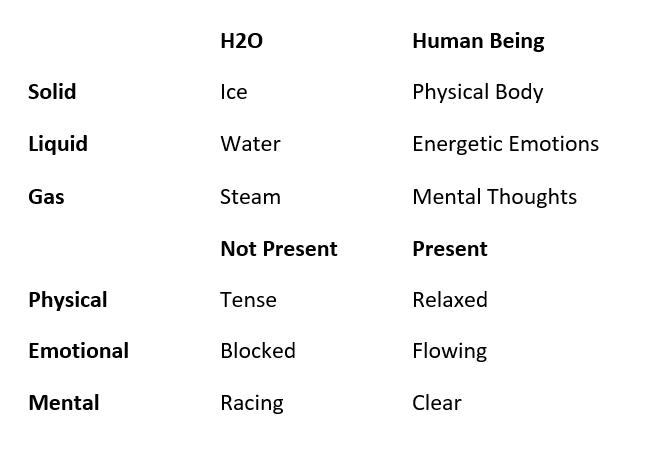Last Updated on June 26, 2022 by Laura Turner
Mindfulness practices have gained momentum in the modern world and with good reason: they are specifically designed to improve our ability to perform under stress and pressure. A regular mindfulness practice helps us move through our lives with greater ease and skill. The following is a concrete discussion on the theory and benefits of mindfulness.
Work in the medical field can be overwhelming. However, regardless of our life responsibilities, we can only actually do one thing at a time. Practicing mindfulness boosts our emotional equanimity and sharpens our focus, so we can tend to the right thing at the right time with as much care and attention to detail as possible. Medical students and professionals have a wide range of stress-inducing responsibilities: studying for boards and shelf exams, managing long lists of patients, performing surgery, working long hours on very little rest, and more. Mindfulness can help you stay more relaxed, energized and clear as you navigate one of the most challenging professional industries. This article begins by explaining the fundamental principles of mindfulness and concludes by addressing how mindfulness can improve your response to situations common to medical professionals.
The Flow State: The Picture of Presence
Before attempting to “be present,” it is important to ask: how do I experience myself when I am present? Becoming familiar with the state of presence will improve the results you get from your daily practice. Psychology refers to presence as “The Flow State.” The world of sports calls it “The Zone.” You have probably had powerful moments in your life when you experienced “The Flow State,” when your sense of being absorbed and engaged was profound. These moments may have occurred on vacation, out in nature, or in the presence of loved ones. While your environment is conducive to eliciting this powerful response in you, ultimately these experiences take place in your body and are generated from the inside out. Mindfulness helps you connect with this state of mind and body that is healthy, pleasurable and conducive to better performance.
The Flow State is characterized by specific qualities:
- Clear, quiet mind
- Relaxed muscles
- Easy, diaphragmatic breathing
- Enhanced blood flow

The goal of mindfulness practices are to help you learn to access these high levels of clarity, relaxation and ease with greater frequency, intensity and duration.
The Foundational Principle of Mindfulness
Progressive relaxation is the core principle of mindfulness and refers to how the ability to relax is a learnable skill that you can develop and sharpen over time. The following chart is a helpful way to understand the process of practicing mindfulness to strengthen your presence:
Whenever your mind is racing, your body is physically tensing up, and your feelings are kept locked inside and suppressed. The three processes are simultaneous & inextricable. Change in one realm is accompanied by change across all three realms. Your physical body is the most obvious and concrete of the three. Therefore, in attempting to become more present to create true behavioral change, use mindfulness to focus on relaxing your physical body: your mental and emotional well-being will then improve in turn.
The Body Scan
The body scan meditation is a classic, trusted way to progressively relax and involves scanning your body from head to toe, feeling each body part one at a time. Using a guided body scan audio track is a great way to begin your practice. One body scan usually lasts about 5-10 minutes, though you can move as slowly or quickly as you wish.
Many meditators believe that relaxing the body is a “warm-up” or secondary benefit to working with your mind. This is not the case. A body scan is referred to as “Vipassana” or “insight meditation” in the Buddhist tradition. Vipassana is one of the core practices taught by the Buddha. Many silent, 10-day retreats are centered around the practice of Vipassana.
You may meditate in any posture that feels comfortable for you: lying on your back, sitting in a chair or on a cushion. If you lie down, make sure your head, neck and lower back are supported with blankets and pillows as necessary. If sitting in a chair, keep your feet flat on the floor. It is very fulfilling to witness your ability to relax gradually improve over time, as this shift corresponds to an enhanced quality of life.
The Fundamental Way to Be Present
The body scan is a wonderful set of training wheels for learning to activate present moment awareness, a process that I call the “Reset.” The Reset involves doing absolutely nothing, noticing what is happening inside and around you, and allowing your mind and body to progressively relax. The Reset is like the body scan but “popcorn style.” You won’t know which body part will relax next, but something will eventually relax, a sign that blood is flowing more readily to the area.
The Reset is the foundational practice upon which every meditation technique is based. Meditation does not get any simpler or more profound than the Reset. Once you have become comfortable with scanning your body, perhaps after a few days or weeks, you are ready to Reset. When you understand how to Reset, you can activate present moment awareness whenever you have time to spare, in as little as 30 seconds. Resetting is a powerful way to rejuvenate yourself, especially during the short breaks that you get during long shifts at the hospital. “Reset” and “meditate” are essentially synonyms.
The Theory of the Reset
Progressive relaxation is not something that you actively do. Carrying tension, however, is something that you are actively doing on a moment-to-moment basis. Carrying tension requires effort, muddies your mind, clouds your judgement, and drains you of energy. Mindfulness is often accompanied by the term “non-doing,” because on a physical level, being still and allowing the body to relax is a completely passive process. On an attentional level, the process is quite active and engaging: you are utilizing your mind to sense your body, emotions and thoughts.
Remember from the chart that whenever your mind is wandering, your body is simultaneously carrying extra tension. While meditating, notice when you are thinking and allow your awareness to drop more deeply into your body. This way you can become aware of the bodily tension that is accompanying the thinking. When the tension melts, the distracted thinking pattern will dissolve.
Noticing that you are thinking during meditation is analogous to a massage therapist finding a knot of tension: it is very much a part of the process. As your body enters deeper states of relaxation, your mind will become increasingly quiet.
Taking “Power Breaks”
Resetting is very beneficial during brief breaks so you can rejuvenate yourself in a short period of time. Find a comfortable position in a quiet place and challenge yourself to be physically still. Moving and fidgeting your body creates busy-ness in the mind and the desire to move usually arises from chronically tense areas of the body. That being said, take care of yourself: adjust your position if your body is truly asking for an ergonomically-sound change.
You will experience deeper rest if you can stay more still. Your ability to be still will improve with time. Set an auditory timer on your phone so that you can fully relax. Be gentle with yourself. Avoid forcing yourself to relax. Instead, simply allow. Remember, all the healthy, positive qualities required to be skillful in your field (focused, equanimous, loving, confident etc.) will be strengthened as your ability to physically relax improves.
Organization and Task Management
Progressive relaxation increases the percentage of your thoughts that are actually useful, beneficial and clear. If you are carrying a lot of tension, your mind is going to busy and cloudy, making task management and prioritization a larger challenge. As your mindfulness practice grows, you will notice your mind and emotions begin to gradually calm down, improving your ability to manage your list of patients and responsibilities.
Also, avoid rushing if at all possible throughout your day. Rushing creates more physical tension and drains your energy. Rushing is analogous to sprinting in a marathon. Rushing is an extraordinarily unhealthy habit that provides very little benefit and takes time to unlearn.
Preparing for Surgery
Staying present during surgery is obviously essential, as life is literally on the line. Many doctors subconsciously tense themselves up and hold their breath during surgery. Avoid doing this, as it will reduce your capacity to stay focused for long periods of time. Notice when you are carrying tension during the procedure and let the tension go. However, do make sure that your attention is externally focused on each individual task. When you are present and absorbed in a task, all of your attention naturally radiates to the outside world. Practice mindfulness shortly before surgery to ensure you feel strong and capable.
Many people suffer from “hand tremors.” This symptom, like the vast majority of health symptoms, is aided and abetted by tension in the body. Practicing mindfulness before performing surgery will steady your focus and your hands.
Preparing For and Taking Exams
Many people erroneously believe that furrowing their brow and tensing themselves up helps them focus. This is inaccurate. Physical relaxation allows your attention to radiate outward, improving your focus. Notice if you are trying to “squeeze” new information into your brain through physical tension. Let yourself relax and breathe, improving the flow of blood to your brain. Relaxation improves your ability to learn new things. Study “from your gut” not just your head, letting your whole body, not just the space between your ears, absorb new information. This will improve your intuition and decision-making skills.
Relaxation improves memory as well. Consider for yourself: when taking a test, does stored information arise in your mind because you strain and struggle to force it out, or does it appear to simply happen? Most people experience the latter. Being physically relaxed (mindful), improves your ability to allow the appropriate information to come to you. Treat the flow of information like it is liquid, not solid. Do not tense up to force it in and let it out. Instead, improve your progressive relaxation skills to facilitate information absorption and recall.
Leaving Work at Work
If, while at home, you find yourself worrying distractedly about work, your body is simultaneously tensing up. Practice mindfulness either at the hospital shortly before you leave, while riding public transportation, or shortly after you arrive home. Oftentimes, your mind is busy because your mind is trying to tell your something important that requires attention.
Keep a notebook at home to record thoughts and insights you would like to remember for the next work day. Doing so will help your body and mind relax. Productivity guru David Allen states: “Your mind is good for generating thoughts, not for capturing them.” Utilize pen & paper or your computer for this purpose.
Conclusion
There is a way to navigate the medical field with more ease and greater dexterity. Mindfulness is at the root of this process, not to mention its capacity to help prevent disease, clarify communication, improve decision-making, and expand our capacity to empathize. If you desire to open yourself up and grow mentally and emotionally, seek to do so on the physical level as well with mindfulness. Taking time to regularly release physical tension will provide you with the behavioral change you seek over time. Begin with the body scan and play the game of seeing how deeply you can feel and relax your body. Allow this quest towards openness to filter into other areas of your life: boost your stretching regimen, improve your diet, and spend more time in nature.

